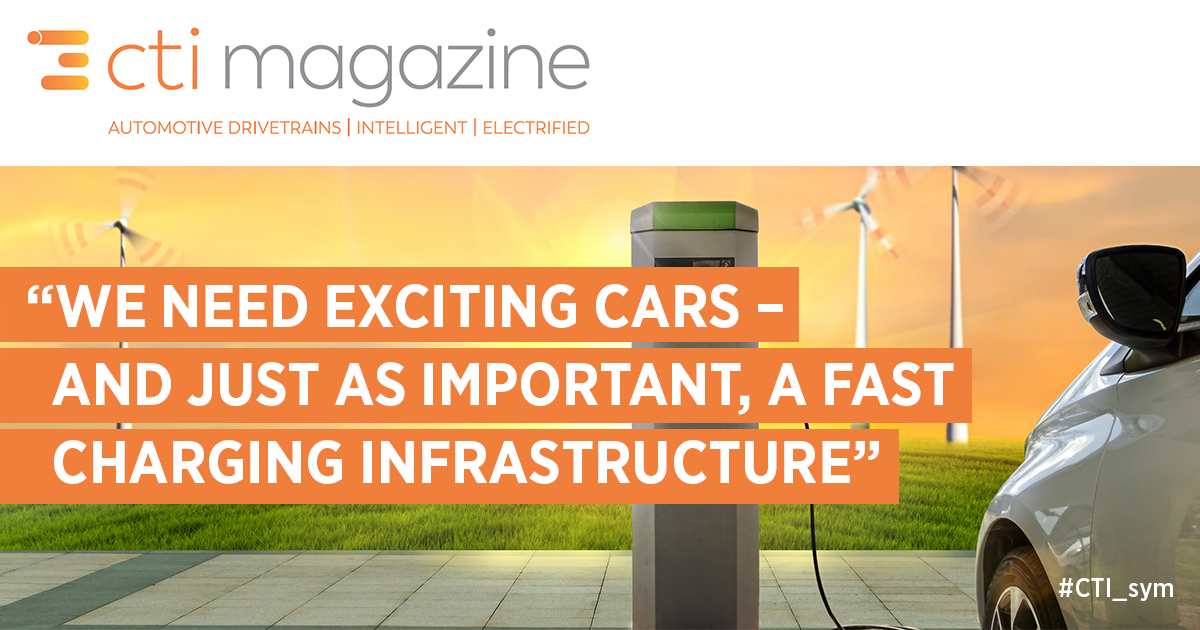
Interview with:
Oliver Blume,
Chairman of the Executive Board of Dr. Ing. h.c. F. Porsche AG

Mr Blume, tell us about the importance of research and innovation for Porsche.
We’re a sports car manufacturer, so innovation has always been a very high priority for our company. Our research and development costs are high as a result: R&D costs for the last year alone totalled EUR 2.2 billion, roughly equivalent to 8.5 per cent of our annual turnover. We’ll have invested around EUR 6 billion in e-mobility alone by 2022.
Is the automotive future electric at Porsche? They say almost every car on the road will be electric by 2030, while the figure for 2025 stands at 25 per cent.
So by 2025, we expect every second Porsche to be electric – either plug-in hybrid models or all-electric sports cars. Our range has included hybrid models since 2010. And we’re about to make a major breakthrough with the electric powertrain thanks to the market launch of the Porsche Taycan.
Will we be seeing any Porsche cars still fitted with internal combustion engines and manual transmissions in future, and if so, for how long?
Internal combustion engines are sure to be around for some time to come – in some regions even for a very long time and in large numbers, too. The markets are developing towards e-mobility at different rates. That’s why we need to remain flexible: our cars are fitted with one of three different powertrain types; additionally optimised petrol engines, advanced plug-in hybrids and all-electric sports cars. This is the right strategic response to the radical change that will be taking place in our industry over the next ten to 15 years. But that said, the trend couldn’t be clearer: we’ll be seeing a sharp decline in the market share for petrol engines in the long term. The future is electric.
Why this narrow focus on just one technology? Other providers are preferring to keep their options open as far as technology is concerned.
At present, only three technologies offer local CO2-free powertrains: e-mobility, hydrogen and synthetic fuels. We’ve opted for the electric powertrain. In terms of the well-to-wheel analysis – that is, the entire mobility chain – an electric car is roughly three times more efficient than an equivalent hydrogen-powered car. And it’s six times more efficient than a car that runs on synthetic fuels, even when you include battery production in the calculation, the ratio is still 1:2 when it comes to hydrogen, and that figure stands at 1:3 as regards synthetic fuels. And the benefit will be even greater when we take into account the advances anticipated in battery development. This is a convincing argument – not to mention the outstanding performance specifications delivered by the electric powertrain. That said, though, pursuing one avenue doesn’t mean completely neglecting the other: synthetic fuels could help reduce CO2 emissions in internal combustion engines in future. In the longer term, even hydrogen may offer more potential. But we can’t wait that long. We have to act now if we want to do something to help the climate.
What needs to be done to help e-mobility achieve a breakthrough?
For this, we need exciting cars – and just as important, a fast charging infrastructure. There’ll be nothing to prevent the ultimate breakthrough for e-mobility when charging the batteries takes about the same time as it takes to refuel a petrol car today. We’re already working along the right lines with the Taycan when it comes to charging convenience.
